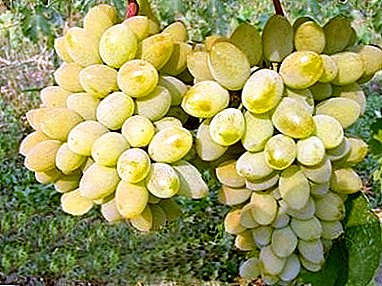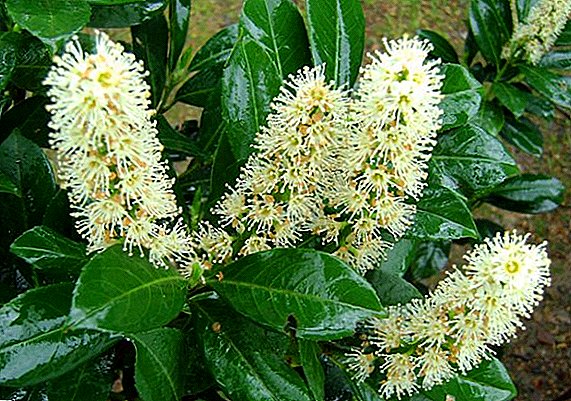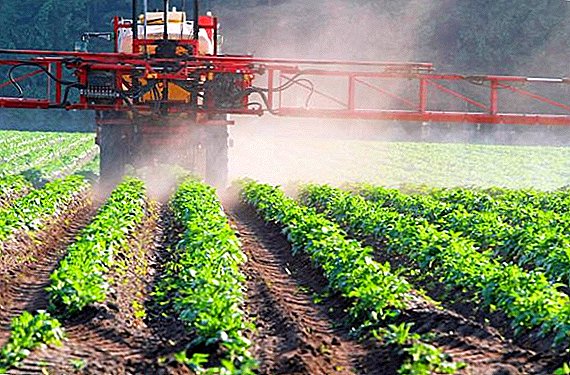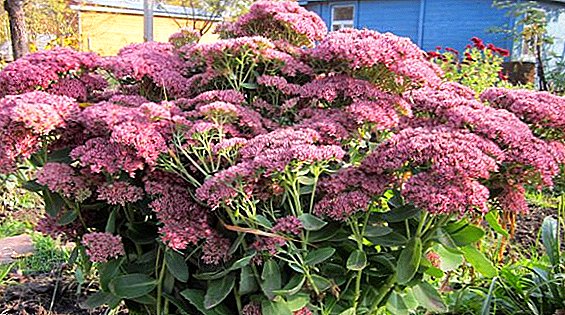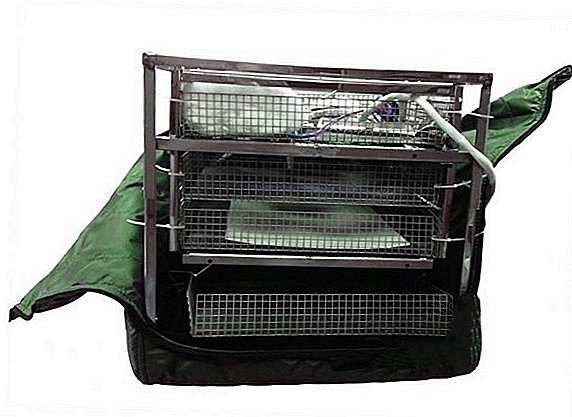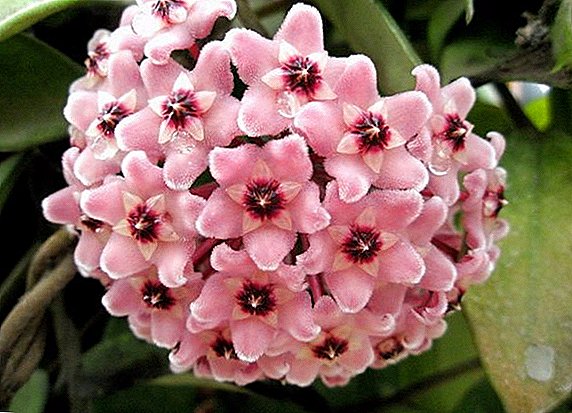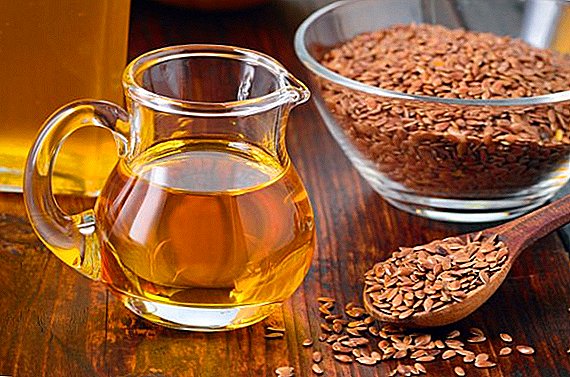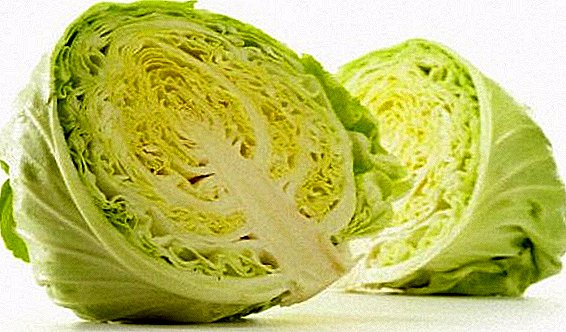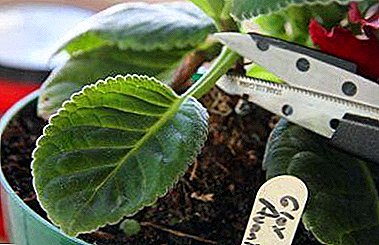
Among indoor plants, gloxinia, also known as synningia, is especially popular with florists. Growers love her for tenderness, velvety flowers and a variety of species.
But this delicate flower requires special attention. It is necessary to ensure the plant care and carefully try to ensure that it successfully multiplies.
In our article you will learn how to successfully propagate Gloxinia using a leaf. You can also watch a useful video on this one.
Ways to grow a plant
Most recognized ways:
- Propagation by leaf stalks.
- Reproduction by seeds.
- Reproduction division of the tuber.
- Reproduction peduncle.
Training
 It is better to carry out the reproduction of Sinengia in early summer, since in fresh leaves, in a given period of time, more power. Besides, the young plant has more opportunity to form a tuber.
It is better to carry out the reproduction of Sinengia in early summer, since in fresh leaves, in a given period of time, more power. Besides, the young plant has more opportunity to form a tuber.
Preparing for reproduction and cultivation at home:
- From a healthy adult plant, cut a leaf taken from the base. (Petiole length up to 5 centimeters.)
- Trim the stem accurately across with a sterile blade or a sharp knife so as not to carry the germs and damage the plant itself, dip the tip into the phytohormone solution.
- Before planting, sanitize the soil with potassium permanganate solution or boiling water.
Pot selection
The pot in which the plant will be placed should be 4–5 centimeters in diameter wider than the tuber itself. Both clay and plastic pots are suitable for cultivation. The form can be absolutely any. It is better not to plant the tubers in too wide or too narrow pot. If the capacity is too narrow, the plant will often dry out, because there is little soil. If on the contrary - too wide - the plant will increase the leaf and root mass, putting off flowering for a long time.
You can read more about the rules for choosing a pot for gloxinia here.
Soil selection
The soil should be loose and have a fluid capacity. Many growers prefer soil for violets. You should not use ordinary peat with a high degree of acidity, because gloxinia will grow poorly and will not give flowers. Optimally:
- 1 piece of leafy ground;
- 0.5 parts of river sand;
- 1 part of deoxidized peat.
Read about the proper preparation of the soil for gloxinia in a separate article.
Step-by-step instructions on how to propagate correctly?
- In a plastic cup we make drainage holes, fill up the ground.
- Moisturize the substrate and make there grooves at an angle of 45 º using a pencil or ice cream sticks. (You can simply place the sheet in the soil at an angle of 45 º).
- We press the earth around. The sheet is placed so that the bottom surface is facing the wall of the pot, and the base of the plate does not touch the soil.
- Top cover cup with a package without hurting the sheet.
- Mini-greenhouse placed in a bright, warm place without the risk of direct sunlight. Soil temperature should not lower below 16ºС.
- We air the greenhouse once a day and water it when the soil dries.
We recommend watching the video on Gloxinia breeding using leaves:
How to grow a piece of leaf?
You can even multiply gloxinia with a piece of leaf.:
- A healthy green leaf is cut into 2 equal parts in the form of a tick (if necessary, the number of parts can be increased).
- The scape is shortened, leaving 2 centimeters.
- Further, using the same algorithm, we plant leaf fragments in the ground, arrange a greenhouse.
We recommend to watch the video on the reproduction of Gloxinia leaf fragment:
When will sprouts appear?
A new baby appears on average during the month. As soon as shoots appear, you need to remove the package to prevent rotting. After that, young plants should be planted separately.
Home care
 In the first 1.5 - 2 months, the plant does not need to be fed. In the future, you can feed every 10 days, but the concentration of the solution should be weaker.
In the first 1.5 - 2 months, the plant does not need to be fed. In the future, you can feed every 10 days, but the concentration of the solution should be weaker.
Gloxinia is fed in cloudy weather or in the evening. An hour after watering, we apply additional feeding, trying not to fall on the leaves and to the point of growth. Make sure that after fertilization, the plant is not in the sun..
Before the appearance of buds, organic fertilizers alternate with nitrogen fertilizers (ammonium nitrate), after the appearance of buds organic fertilizers alternate with phosphate fertilizers (phosphoric acid potassium, superphosphate).
- Nitrogen fertilizers cause vegetative growth, but excess nitrogen can cause root rot. Therefore, such fertilizers give only at the beginning of growth.
- Phosphoric - enhance flowering, however, an excess of phosphorus leads to chlorosis plants.
- Trace elements - affect the color and number of buds, the size of the flowers.
Organic fertilizers - bird droppings.
After the third or fourth pair of leaves, young buds appear. The amount depends on the conditions and weight of the tuber.
If the first bloom was early, gloxinia may bloom again.. In such a case, the above-ground part (flowers, leaves) is cut, leaving a shoot 2 centimeters long. Repeated flowering is not peculiar to all species and varieties of plants.
In autumn, when it is clear that the soil does not dry out for a long time, watering is gradually reduced, and with the appearance of yellowness on the leaves, we stop watering completely. When the ground part of the tuber dies, the plant goes into a dormant period, which lasts 3-4 months.
Board: A tuber pot is placed in a cool place (+10 - +15 ºС). During the winter, the soil is moistened several times; if the storage temperature is higher, it is necessary to moisten it more often.
You can read about the features of Gloxinia wintering here.
Watering
During active growth, gloxinia is watered with distilled water at room temperature., but you need to be careful, because the plant does not tolerate moisture due to susceptibility to fungal diseases. Depending on the place of storage, during the period of rest, watering is reduced or does not moisten at all.
How to water young shoots?
Young processes need to be watered with soft water (thawed, rain, partially boiled). When watering, make sure that water does not fall on the leaves and in the center of the tuber. Water is 2-3 ° C warmer than the ambient temperature. Watering is reduced in cloudy, cold, rainy weather, as well as during the rest period.
Thus, now you know how to multiply Gloxinia from a leaf at home. When breeding siningii it is very important to be patient and carefully care for the flower grown. Then, with careful care, creating suitable conditions and timely feeding, the plant will delight with delicate and velvety flowers, as well as successfully reproduce.



